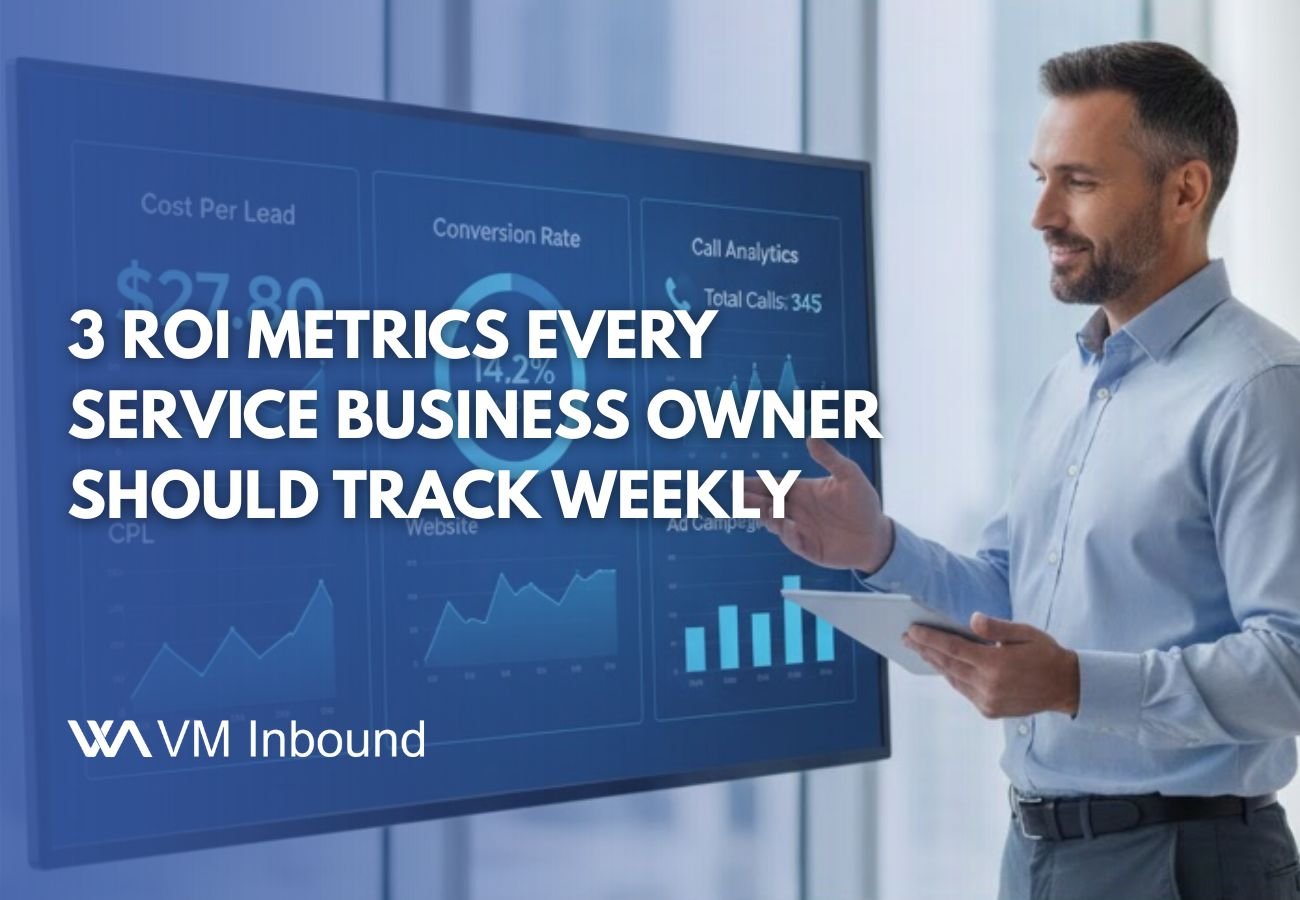If you’re not measuring your marketing ROI, you’re guessing, and guessing is expensive for small business owners. Knowing exactly which efforts bring you leads (and which don’t) is the difference between predictable growth and wasted ad spend.
In this guide, we’ll break down the 3 ROI metrics every service business owner should track weekly, and how they directly impact marketing ROI for small business success.
Introduction
Marketing can feel like a black box: money goes in, and sometimes leads come out. But what if you could see what’s working in real time? What if you could confidently decide where to invest without relying on gut instinct?
Understanding marketing ROI for a small business isn’t complicated once you focus on the right numbers. This article shows you the three essential ROI metrics that reveal the truth behind your marketing results and help you scale smarter, faster.
The Problem: Most Service Businesses Aren’t Tracking the Right Numbers
Many service business owners check only surface-level stats:
- “We got some calls this week.”
- “Our Google Ads seemed busy.”
- “Facebook leads felt slow.”
But feelings don’t pay the bills, and they don’t help you optimize your marketing spend.
Without tracking ROI-focused metrics weekly, business owners often run into:
- High cost per lead without realizing it
- Leads are coming in, but no clarity on which campaigns actually convert
- Missed opportunities because calls aren’t tracked or measured
- Inconsistent revenue that feels impossible to stabilize
The solution? Tracking simple, powerful data points you can review every week.
The 3 Weekly Metrics That Fuel Better Marketing ROI for Small Businesses
1. Cost Per Lead (CPL)
Your Cost Per Lead tells you how much you’re paying for each inquiry or form submission. This is the foundation of marketing ROI for small businesses because every optimization starts here.
Formula:
Total Ad Spend ÷ Number of Leads = Cost Per Lead
Why it matters:
- Shows if your ads are cost-effective
- Helps you compare performance across platforms (Google Ads vs. Facebook Ads)
- Let’s you set realistic revenue goals
What to aim for:
Track your CPL weekly for each channel. If you’re paying more but not getting better lead quality, it’s time to optimize or reallocate budget.
2. Lead-to-Sale Ratio
This metric shows what percentage of leads turn into paying customers.
Formula:
Number of Sales ÷ Number of Leads = Lead-to-Sale Ratio
Why it matters:
- Reveals the true effectiveness of your sales process
- Helps you understand if you need better lead nurturing or follow-up
- Prevents you from blaming “bad marketing” when the real issue may be sales consistency
Example benchmarks:
- Home services (plumbing, HVAC): 20–40%
- Professional services (legal, accounting): 10–25%
- Local contractors: 15–30%
This metric is the bridge between marketing and revenue. Improve this ratio, and your ROI skyrockets even without spending more.
3. Call Tracking & Attribution
If you get phone calls (and most service businesses do), you must track them. Phone calls often convert 3–5x better than form submissions, but without call tracking, you’re blind to where your best calls come from.
What call tracking tells you:
- Which ads generate phone calls
- Which keywords triggered the call
- How many calls turned into booked jobs
- Which team members answer and convert best
Weekly insights to review:
- Call volume by channel
- First-time callers vs. repeat callers
- Missed calls (these cost you money!)
- Call quality or intent
When you combine call tracking with cost per lead and lead-to-sale ratio, you get a complete picture of your marketing ROI for small business performance.
Examples: What This Looks Like in Real Life
Let’s say you spent $1,000 on Google Ads last week.
Example Breakdown:
- Total Leads: 25
- CPL: $1,000 ÷ 25 = $40 per lead
- Total Calls: 12 tracked calls
- Converted Jobs: 6
- Lead-to-Sale Ratio: 6 ÷ 25 = 24%
With these numbers, you can now calculate your true weekly ROI.
If your average job is $350, those 6 jobs produced $2,100.
Your spending was $1,000.
Your weekly ROI is strong, and you now know exactly why.
This kind of clarity is what helps small businesses grow consistently without wasting money.
Start Tracking ROI Weekly, Your Profit Depends on It
Most service business owners don’t have a marketing problem; they have a measurement problem. When you track cost per lead, lead-to-sale ratio, and call attribution, marketing becomes predictable, profitable, and scalable.
If you’re serious about improving marketing ROI for a small business, start reviewing these metrics every single week.
🚀 Want This Done For You? Get the Marketing ROI Dashboard Demo
Stop guessing and start measuring what matters. See all your leads, costs, calls, and conversions in one simple dashboard.
Contact us today to get your Marketing ROI Dashboard Demo and take control of your growth.



